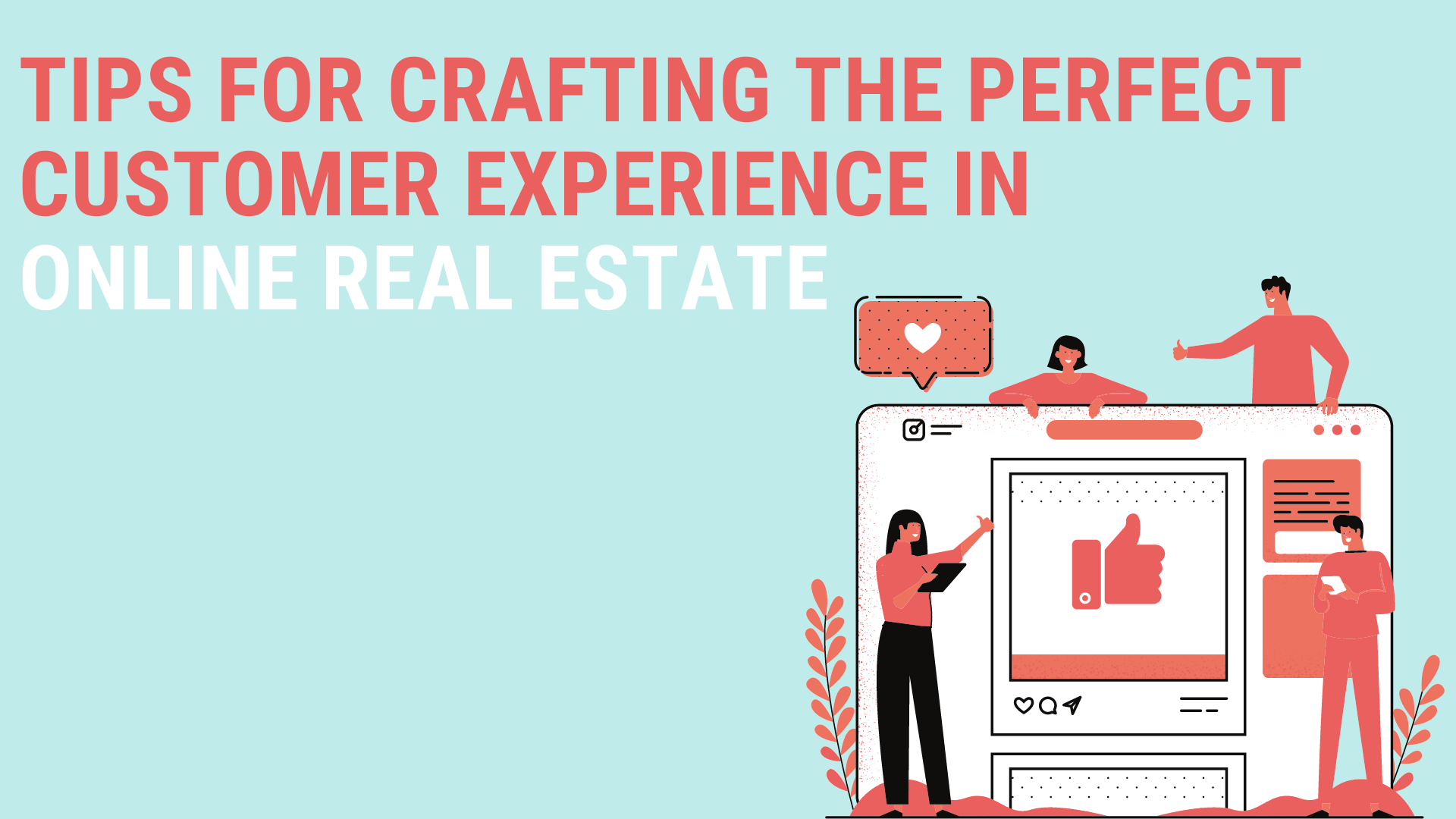Tips for Crafting the Perfect Customer Experience in Online Real Estate
June 23, 2021 | 3 min read

Today, real estate companies understand better than ever that they need to compete on customer experience. A positive customer experience cultivates brand awareness, loyalty and ultimately attracts new and returning customers to the real estate website. With this in mind, let’s look at some tips on how to create the perfect customer experience in online real estate.
Offering More
When it comes to customer experience, offering more means providing more utility than other real estate marketplaces, or at the very least, keeping up with the competition.
In 2021, internet users are not short of flashy technological additions to the browsing experience. In some cases, users come to expect a certain level of functionality, like an intelligent search function with lots of filters, a simple mortgage calculator, and perhaps a calculator for other fees like property taxes.
In addition, however, you can elevate the customer experience by providing a “wow factor”. “Wow factors” aren’t things users expect, but something that adds utility and makes the experience memorable. When customers have a memorable and positive interaction with a website, they are more likely to seek that website out again in the future and recommend it to their peers.
So, what are some examples of “wow factors” on online real estate websites?
- AI – Using image recognition and computer vision to extract more detail and context from uploaded images. For example, if an agent uploads a photo of a kitchen, the image recognition can identify whether it was recently refurbished, the decor style (modern/traditional kitchen), and more. Often the details found in the images are missing from the property descriptions, impacting the search functionality. With AI, users can find properties with greater relevance to their wants and needs.
- Personalization – Users will stay on a site for longer when presented with options that align with their preferences. Creating personalized, highly targeted experiences involves knowing who your customers are (demographics like age, marital status, income level). Knowing this information can allow you to rank search results in very specific ways. For example, a couple with two children and a dog is more likely to want a property with a lawn than decking.
- Linking to additional information – Users expect to find all of the essential details about a property on the listing (for example, floor plan, number of rooms, age of the property, and so on). However, you can provide additional material by linking to or integrating information from external sites that offer things like the history of the area, historical photographs, local events, and so on.

Eliminating Friction
Bounce rate is something every website host has to contend with. The bounce rate is defined as the percentage of single-page visits (the user only visits one page before exiting the site). A high bounce rate usually indicates that users find the page they land on to be irrelevant to their search term or too confusing to navigate.
Some industries have higher baseline bounce rates than others, and the good news is that the real estate industry has a comparatively low bounce rate at 5% (compare this with 50% for business sites and 62% for science sites).
However, bounce rates start to creep up if you have too much friction built into the website.
Here are some examples of friction points on real estate websites:
- Asking users to sign in – Many visitors find this pushy, inconvenient, and presumptuous (why should they give their contact details to a company that hasn’t earned their trust?). Naturally, real estate companies want to collect user contact details to generate leads and improve their targeting, but a balance must be met. Don’t be aggressive with getting personal details from users. Instead, ask for more information further into the customer journey, for example, when they want to reach out for further information on the property.
- Too many pages – Users should see all relevant information about a property on one page. If they have to click through several pages, they are likely to become frustrated and give up.
- Clean and simple design – All websites want to stand out from the crowd, but this should never be at the expense of user experience. Crowded text and images with very little white space are painful on the eyes.
- Not having a clear search bar – The search function is a critical element of all real estate marketplaces, so it must be placed prominently so it can’t be missed. It must also be easy to use.

Being Where Your Customers Are
While your real estate website will be the primary communication tool between you and your prospective customers, you shouldn’t rely on the website to do all the heavy lifting. If you want to drive more high-quality traffic to your real estate portal, you need to be where your customers are.
A recent study found that 76% of realtors use Facebook for their work. Are these realtors selling houses through Facebook? No, not most of the time. However, their customers (prospective buyers) are on Facebook.
Using the communication tools that your customers use, whether that’s social media platforms like Facebook, Instagram, Twitter, and TikTok, or messaging tools like WhatsApp and Facebook Messenger, has distinct benefits:
- Interrupting their thought process – Having a social media presence is a great way to grab prospective buyers’ attention when they would otherwise be doing something else. If you always rely on customers to be proactive in finding your site, you miss many opportunities. Some people will never find your site when they sit down to search for property, and others may find your site but may become distracted and have to see to other commitments.
- No barrier to entry – There’s no learning curve associated with using social media or messaging apps because most people are already using them in their daily lives.

Final Thoughts
By putting a concerted effort into customer experience, real estate websites gain more visitors, leads, and customers. If you want to stand out from the other real estate marketplaces on the web, you need to create memorable, frictionless, and high-utility experiences.
Want to get more high-quality contact requests? Get our ebook now, learn how industry leaders and e-commerce are using data & personalization to gain more relevant leads.
How House Alerts Help To Obtain Higher Click-Through Rates
Thanks to house alert systems, you can quickly inform potential buyers when new properties that match their criteria show up. Here is a step-by-step guide that will show you how you can retarget potential customers and help them find the house of their dreams.
Two Unique Dashboards That Will Help Your Real Estate Agents Close More Deals
Being successful in sales is about knowing your product inside out and knowing everything there is to know about your customer. Luckily, it’s easier to achieve these two goals today than ever before by using some unique dashboards. Read everything about it here:
How Artificial Intelligence is Shaping the Online Real Estate Market
Now in 2021, the message is clear; AI is here, and it’s here to stay. But what impact does this technology have on the real estate market? Read everything about it in this article



